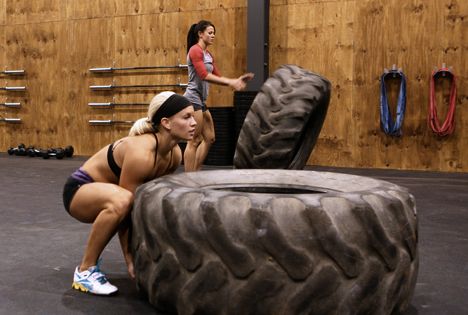
3 Exercises That Your Athlete Must Avoid At All Costs
When training an athlete of any level and age, the number one goal is to ensure that they don’t get hurt. Whether it’s on the field or in training, an injury that keeps an athlete off the field makes them less valuable to their team. Training to prevent injuries on the field is a little more complicated than avoiding training injuries because of the uncontrolled nature of competitive sports. The weight room however, is a controlled environment, and a controlled environment is a much easier place to prevent injuries. It really comes down to the simple concept of maintaining good form, and avoiding high risk activities. Here are 3 of the worst exercise sselections for training athletes.
1 – Tire Flips
Has anyone ever suggested that rounding your back on a deadlift was a good way for an athlete to train? This is exactly what a tire flip looks like the way that most people train it. Because of how low you have to get to put your hands under the tire, and the fact that the tire is out in front of you, it’s extremely difficult to maintain a neutral spine througout the movement and there are very few people with the hip mobility to do so. Progression becomes difficult as the size of the tire increases, and it’s not like you can have a bunch of tires in 20lb increments laying around. Save yourself the trouble, cut this one out of your programming and work on hex bar deadlifts or hex bar jump squats instead. The reward will be greater and the injury risk will be significantly reduced.
2 – High Rep Box Jumps
Box jumps are a great exercise, they’re also one of the most commonly butchered exercises. They’re an easy way to teach deceleration and work on explosiveness when done right. When done as a high rep conditioning exercise, they’re great for strained calves, achilles tendonitis, poor deceleration mechanics, and bloody shins. The two greatest benefist of box jumps, explosiveness and mechanics, are best achieved with a fresh nervous system, a high level of muscle fiber recruitment, and an absence of fatigue. Stick to keeping your reps no higher than 8, preferrably even lower, with a couple minutes of rest in between sets. Land on the box heels first and don’t let your body weight roll to the balls of your feet on the landing. Step down between reps, and pick a height that’s challenging, but still allows you to land in a solid athletic position.
3 – Burpees
This should be number one. What a useless exercise. A belly flop, followed by a pushup that looks like a bad version of “the worm” into a half-hearted jump squat at the top. Over and over until you feel like puking. Made even more dangerous by adding a weight vest or dumbbells. The transition from pushup position to squat position falls into the same category as the tire flips, it’s nearly impossible to get your feet back under you without forcefully and explosively flexing your spine. If you’re going to try to combine two exercises into one for conditioning purposes, just do the two exercises back to back and skip the dangerous transition. Really want to get your heart rate up with an athletic movement? Sprint; sprint as hard as you can for as long as it would take to do however many burpees you were going to do. Instead of forced spinal flexion and a low level of power output you’ll get explosive full hip extension, rotational power, and you’ll get your heart rate through the roof. You’ll also likely do more sprinting than burpess on the playing field so you have a direct carryover from your training to competition.
Steve Zarriello B.S., CSCS, TPI Certified, is the Owner of Olympia Fitness and Performance in Cranston, R.I. He has been a strength and conditioning coach for almost 15 years and has trained athletes of all sports and levels, but his passion is training golfers to keep them injury free and help them improve their game.

